Since it doesn’t require earth, hydroponics is a popular and rising trend in plant growth. Here, plants have their bases dipped into a nutrient-rich fluid.
Gardening is a passion of mine, so I’ve always been curious about hydroponics and what it could do for my hobby.
But, do hydroponic plants grow faster?
This is the query which I get quite frequently. I believe all the gardeners and farmers should think carefully about plant development rate because it affects crop success and when food can be harvested.
So, do hydroponic plants develop quicker than soil-based plants? We’ll investigate the science behind hydroponic plant growth to find out.
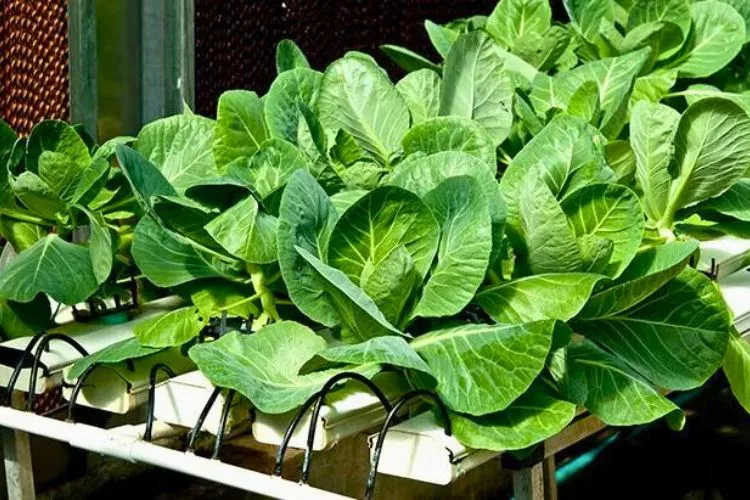
Table of Contents
Do hydroponic plants grow faster? (My Honest Take)
This is a question that many people ask, and the answer is not as straightforward as you might think. While some studies have shown that hydroponic plants can grow faster than soil-based plants, it’s important to consider all factors that can influence plant growth.
If the proper conditions are fulfilled, hydroponic plants can outgrow their soil-grown counterparts more quickly. Hydroponics’ primary benefit is the ability to accurately regulate environmental factors like light, temperature, and fertilizer levels.
This implies that plants can get the precise nutrients they need at the precise times they need them to flourish.
Increased nutrient uptake and accelerated development are two additional benefits of hydroponic systems, which transport nutrients straight to the roots of plants.
Plants in hydroponic systems don’t have to work as hard to obtain nutrients from the water as they would from the earth, which can also contribute to quicker development.
However, it’s important to note that not all hydroponic systems are created equal, and the type of system you use can greatly impact the speed of plant growth.
Factors such as the type of nutrient solution used, the amount of light and CO2 provided, and the growing medium all play a role in determining how quickly plants will grow.
How Hydroponics Works?
In hydroponics, plants are grown without the use of the earth. Rather, plants have their bases dipped into a nutrient-rich fluid. Because of its many advantages over earth farming, hydroponics has rapidly gained popularity in recent years.
There are several types of hydroponic systems, each with unique advantages and disadvantages. The most common systems include deep water culture, nutrient film technique, drip irrigation, and aeroponics. Let’s have a quick look at each of them:
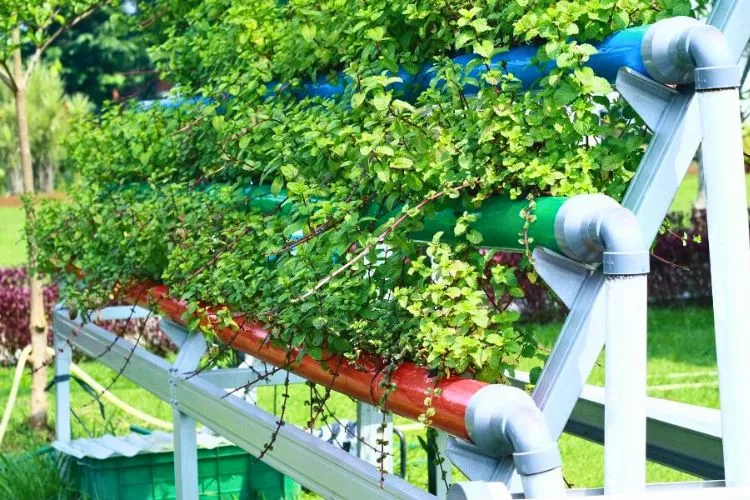
- Deep Water Culture (DWC): Plants are suspended in a nutrient solution that is aerated with air stones to provide oxygen to the roots.
- Nutrient Film Technique (NFT): A thin film of nutrient solution flows over the roots of plants in a sloped trough, providing nutrients and water.
- Drip Irrigation: The nutrient solution is dripped onto the base of plants through small tubes or drippers, providing a steady supply of nutrients and water.
- Aeroponics: Plants are suspended in the air and sprayed with a nutrient solution mist, providing nutrients and oxygen directly to the roots.
Hydroponic systems’ chief benefit is that they permit exact management of the environment in which plants are nurtured.
Consequently, it is now possible to provide plants with the precise quantity of light, nutrients, and water they require, eliminating the need for guesswork.
On the other hand, conventional soil-based gardening frequently involves trial and error to achieve optimal growing circumstances. As a result, plants risk being over- or under-watered, malnourished, or starved of sunshine.
Another advantage of hydroponics is that it can be much more water-efficient than soil-based gardening. In hydroponic systems, water is reused and recycled, meaning less water is needed overall.
Factors That Influence Plant Growth
The development of plants can be affected by several variables regardless of whether they are grown in a hydroponic setup or dirt.
A thorough comprehension of these elements is essential for optimizing plant development and harvests. Important considerations include:
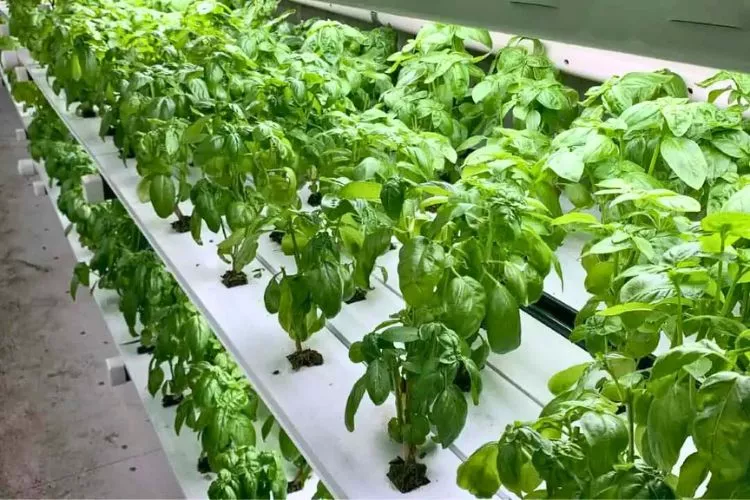
- Light: Plants need light to grow, and the amount and quality of light they receive can greatly impact their growth. In hydroponic systems, artificial lighting is often used to provide plants with the right amount of light.
- Temperature: The ambient weather also influences how well plants flourish. Some plant types have a narrower optimal temperature range than others.
- Nutrients: To flourish, plants need a steady supply of water, light, and minerals like nitrogen, phosphate, and potassium. The fertilizer fluid in hydroponic systems supplies these elements.
- pH Levels: Plant development can also be affected by the fertilizer solution’s pH level. Most plant life thrives between 5.5 and 6.5 on the pH scale.
- Carbon Dioxide: Plants also need carbon dioxide to grow, and the amount of CO2 in the growing environment can impact plant growth.
One benefit of hydroponic systems is that they permit precise control over these variables, which can expedite and improve plant development.
Growers using hydroponics, for instance, can fine-tune the environment by adjusting temperature and illumination to achieve optimal results. It’s much more challenging to attain this degree of control when using soil.
Studies on Hydroponic Plant Growth
Several academic investigations have compared hydroponic plant cultivation to soil-based gardening. Hydroponic plants have been shown to develop quicker and yield more than their soil-based cousins, though study findings have been mixed.
Lettuce produced hydroponically, for instance, outperformed soil-grown lettuce in terms of both growth rate and yield, according to research released in the Journal of Food, Agriculture, and the Environment.
Compared to their soil-grown counterparts, hydroponic tomato plants were also found to have greater yields and berry production in research released in the Journal of Plant Nutrition.
However, it’s important to note that not all studies have found significant differences between hydroponic and soil-based plant growth.
One study published in the Journal of Horticultural Science & Biotechnology found that while hydroponic tomato plants did grow faster initially, there was no significant difference in overall yield compared to soil-based plants.
It’s important to remember that the particular hydroponic system used, the plant species being produced, and the specific growth circumstances can all significantly affect the outcome of these studies.
Therefore, it’s vital to view these studies skeptically and perform your trials to determine what works best for you.
Advantages and Disadvantages of Hydroponic Growing
There are some advantages to hydroponic growing that soil-based farming doesn’t have, but it’s also essential to consider the disadvantages. The benefits and drawbacks of hydroponic gardening are as follows:
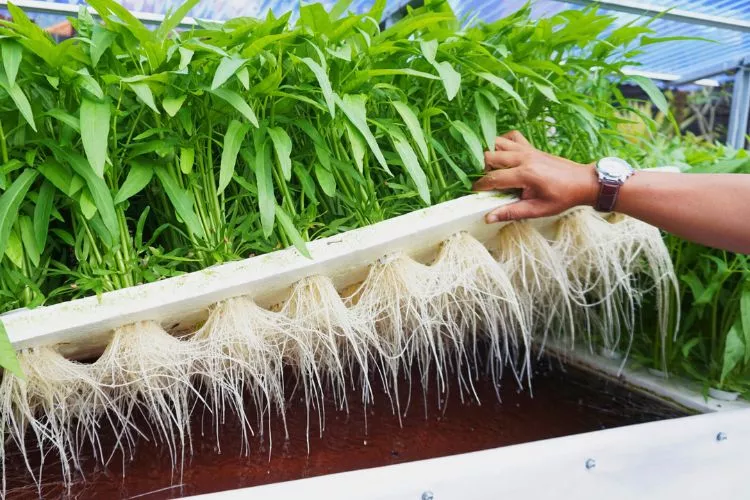
Pros
✅ Precise control over growing conditions: Hydroponic systems permit exact management of the environment in which plants grow, including the availability of water, fertilizers, and sunshine. Increased growing rates and harvests are possible outcomes.
✅ Reduced water usage: Hydroponic systems are more eco-friendly than soil-based gardens because they require less water.
✅ Scalability: Hydroponic systems are adaptable for small-scale agriculture and large-scale cultivation due to their scalability.
✅ Reduced need for pesticides and herbicides: Hydroponic systems are generally less prone to pests and diseases, reducing the need for harmful chemicals.
✅ Year-round growing: Hydroponic systems allow for year-round growing, making it possible to enjoy fresh produce even during the off-season.
Cons
❌ Initial setup costs: It may cost more to establish a hydroponic system than to grow plants the conventional way due to the need for costly tools and nutrients.
❌ Maintenance: Hydroponic systems require regular maintenance and monitoring, including pH testing and nutrient management.
❌ Learning curve: Hydroponic systems can be more challenging for beginners, requiring more technical knowledge and expertise than traditional gardening methods.
❌ Reliance on electricity: Electricity is typically needed continuously in hydroponic systems to run fans and lights.
❌ System failures: There is a risk of crop failure and material wastage in hydroponic systems due to malfunctions.
In what settings can hydroponics be used?
As a result of their adaptability and scale, hydroponic systems can be used in various contexts, from backyard cultivation to industrial production. Some common applications of hydroponics are listed below:
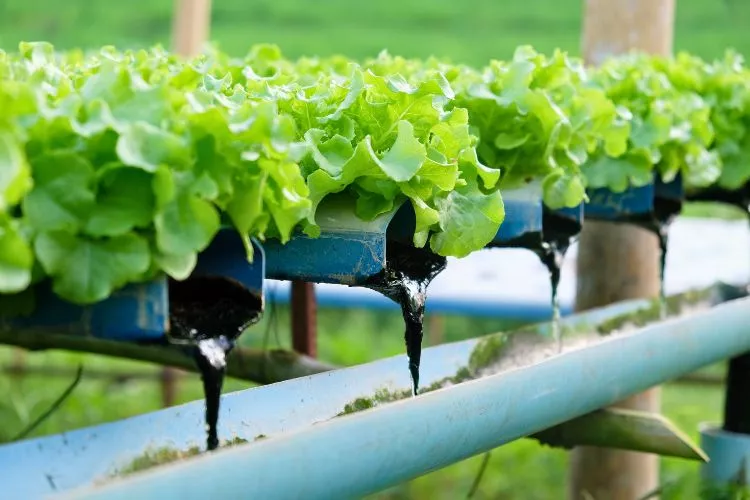
- Home gardening: Hydroponic systems can be a great option for home gardeners with limited space or poor soil quality. They can be set up indoors or outdoors and customized to suit the specific needs of the gardener. Home gardeners can grow a range of plants hydroponically, including herbs, vegetables, and fruits, and enjoy year-round growing regardless of the weather outside.
- Community gardening: Community plots incorporating hydroponic systems are a great way for neighbours to work together and provide healthy food to their neighborhoods. Hydroponic systems require a minimal area for installation, making them well-suited for use in urban community gardens; these gardens can be used to cultivate a wide variety of plants for distribution to residents.
- Educational settings: Schools and other educational institutions can use hydroponic systems to educate pupils about plant development and sustainable agriculture. Hydroponics provides a great opportunity for students to learn about sustainable agriculture, try out various growth methods, and even create their own systems.
- Commercial farming: It is becoming increasingly common for industrial farms to use hydroponic systems to cultivate a wide variety of products, from lettuce and tomatoes to strawberries and herbs. Hydroponic systems, which can be set up in greenhouses or other controlled settings, enable the exact management of growing conditions and, theoretically, higher yields than conventional agricultural techniques.
Tips for Successful Hydroponic Growing
There are some tried-and-true methods that, if followed, can maximize your chances of success with hydroponic growth. Some things to bear in mind are listed below.
- Choose the right system: Each form of hydroponic system has its own set of advantages and disadvantages. Consider your growth environment and desired yield before settling on a particular method.
- Monitor plant health: Regularly check your plants for signs of nutrient deficiencies, pests, and disease. Catching problems early can help prevent crop loss and ensure healthy plant growth.
- Manage nutrients and pH levels: Hydroponic systems require careful nutrient levels and pH management to ensure healthy plant growth. Test the nutrient solution regularly and adjust it to maintain optimal growing conditions.
- Use proper lighting: Lighting is critical for healthy plant growth in hydroponic systems. Choose high-quality grow lights appropriate for the plants you’re growing, and ensure they are positioned correctly for optimal coverage.
- Control temperature and humidity: Plants grown in hydroponic systems do best when the surrounding air is warm and moist. Get a thermometer and a hygrometer to keep track of the temperature and humidity so you can make the necessary changes.
- Prune and space plants: Regular pruning and spacing of plants can help maximize yield and ensure healthy growth. Remove dead or damaged leaves and space plants according to their specific needs.
- Choose the right plants: Not all vegetation thrives in a hydroponic environment. Pick crops like cabbage, herbs, and peppers that thrive in hydroponic environments.
What is the Fastest Growing Plant in Hydroponics?
It is well-known that some plants thrive in hydroponic environments and others do not. Lettuce is one plant that sticks out for its rapid growth rate.
Lettuce can be grown rapidly thanks to the hydroponic system’s ability to precisely regulate environmental factors like light, fertilizers, and pH.
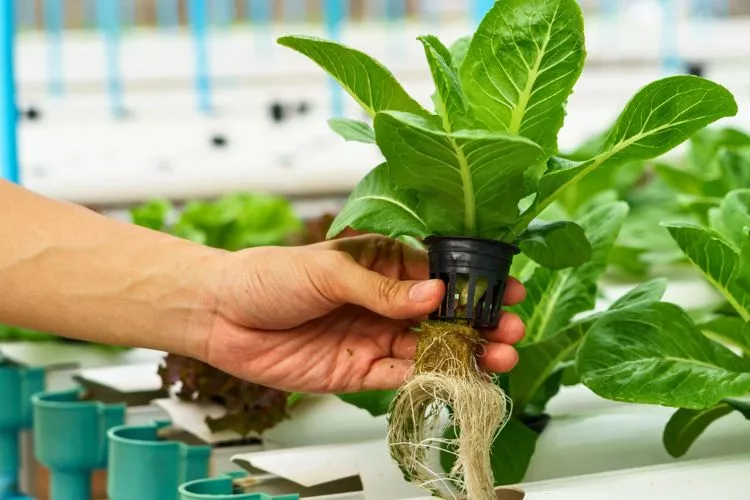
Furthermore, lettuce is a compact plant that doesn’t need much space to grow.
Other fast-growing plants using hydroponics
Some other fastest-growing plants using hydroponics include:
- Spinach – Rapidly reproducing spinach is a good candidate for hydroponic cultivation. To flourish, it needs exposure to bright light and a nutrient-rich medium.
- Basil – Basil is a fast-growing plant that can be picked several times throughout the growing season. To flourish, it needs a light, balmy environment.
- Cucumbers – Cucumbers are rapid-growing produce that can be cultivated vertically for those with access to hydroponic systems. They need a lot of room to spread out in and a nutrient-rich environment to flourish.
- Strawberries – Hydroponic methods allow for the year-round cultivation of strawberries, a crop with widespread appeal. They need a lot of light and a nutrient mix that’s just right.
- Arugula – Growing arugula hydroponically is a good option because it grows quickly. It must be kept in a temperate environment and exposed to lots of light to flourish.
Frequently Asked Questions (FAQs)
What types of plants can be grown hydroponically?
Various plants can be grown hydroponically, including leafy greens, herbs, tomatoes, cucumbers, strawberries, and more.
How much does a hydroponic system cost?
How much money you’ll need to invest in a hydroponic system is determined by factors like the scale and intricacy of the setup and the plants you intend to cultivate. Larger, more complex systems can cost several thousand dollars, while smaller, more basic systems can be bought for as little as $50.
Does hydroponics yield more than soil?
With greater precision over growing circumstances, hydroponic systems can outperform soil-based growing techniques in yield. However, the sort of plant being grown and the particular hydroponic method used are just two of the many variables that can impact yield.
Conclusion:
In conclusion, compared to conventional soil-based growing techniques, hydroponic systems can promote faster plant development and produce greater yields.
Hydroponic growth can revolutionize agriculture in the future, but it isn’t without its share of challenges. It is our sincere hope that you have found this manual instructive.
Our website contains articles on related subjects. Please revisit us shortly to read further updates.


